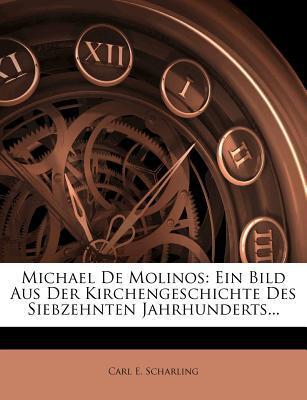
Michael De Molinos: Ein Bild Aus Der Kirchengeschichte Des Siebzehnten Jahrhunderts...
작성자
Carl E. Scharling
아직 평점이 없습니다
Biography
Autobiography & Memoir
Religion & Spirituality
형식
페이퍼백
페이지
258
언어
독일어
출판됨
Jan 1, 2012
출판사
Nabu Press
ISBN-10
1275048609
ISBN-13
9781275048607
설명
Carl E. Scharling brings to life the complex tapestry of 17th-century church history through his exploration of Michael De Molinos, a significant figure in the realm of spiritual introspection and mysticism. This narrative delves deep into De Molinos' philosophies and teachings, which resonated within the tumultuous religious landscape of his time.
Scharling meticulously examines how De Molinos' insights contributed to a broader dialogue on spirituality, offering a counter-narrative to the rigid doctrines prevalent during the era. As the author uncovers the socio-political influences surrounding De Molinos, readers gain a richer understanding of the internal and external conflicts that shaped his ideology.
The work also highlights the tensions between emerging mystical practices and traditional church authorities, presenting a landscape marked by both innovation and resistance. Through detailed analysis and evocative prose, Scharling invites readers to reflect on the implications of De Molinos' ideas for contemporary spirituality.
Ultimately, this examination serves not only as a scholarly retrospective but also as a bridge connecting past beliefs to current discussions about faith and personal experience. Scharling’s thoughtful portrayal of De Molinos’ life and impact encourages a deeper exploration of the spiritual quests that continue to influence modern thought.
Scharling meticulously examines how De Molinos' insights contributed to a broader dialogue on spirituality, offering a counter-narrative to the rigid doctrines prevalent during the era. As the author uncovers the socio-political influences surrounding De Molinos, readers gain a richer understanding of the internal and external conflicts that shaped his ideology.
The work also highlights the tensions between emerging mystical practices and traditional church authorities, presenting a landscape marked by both innovation and resistance. Through detailed analysis and evocative prose, Scharling invites readers to reflect on the implications of De Molinos' ideas for contemporary spirituality.
Ultimately, this examination serves not only as a scholarly retrospective but also as a bridge connecting past beliefs to current discussions about faith and personal experience. Scharling’s thoughtful portrayal of De Molinos’ life and impact encourages a deeper exploration of the spiritual quests that continue to influence modern thought.